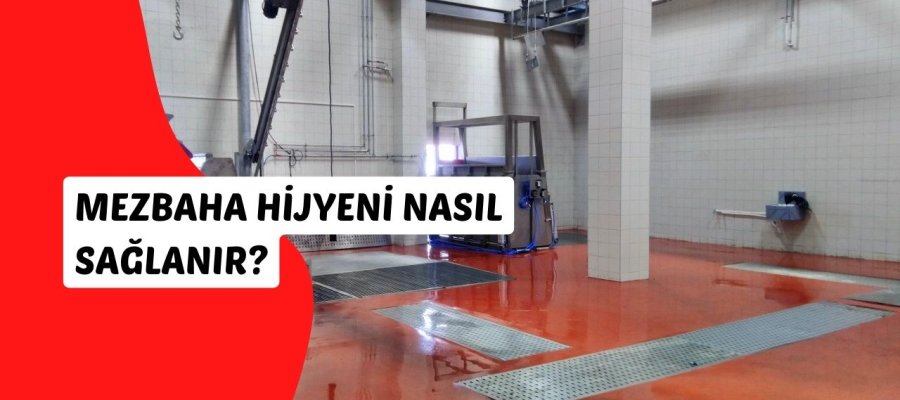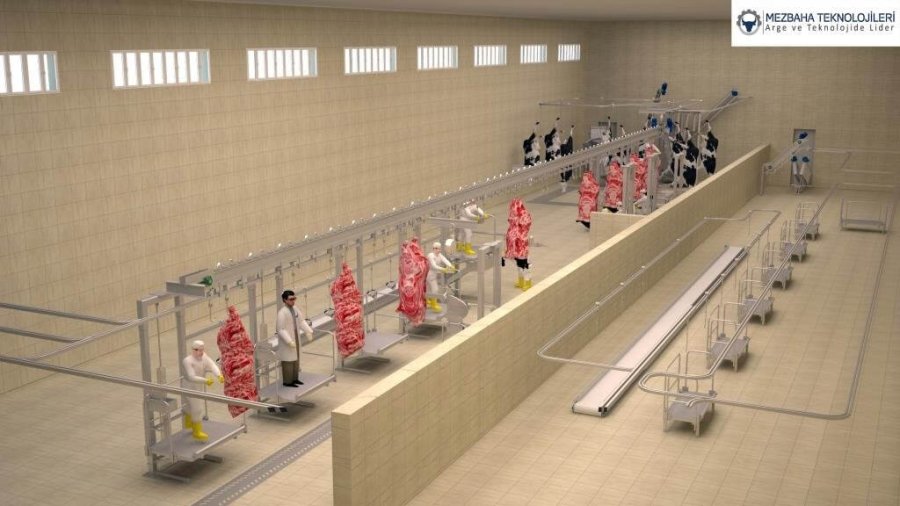
How to Ensure Hygiene in a Slaughterhouse? 10 Golden Rules
Ensure top slaughterhouse hygiene with expert tips on cleaning, HACCP, equipment, and hygiene control for safe meat processing.
13 August, 13:08
Maintaining impeccable hygiene in a slaughterhouse is not only a legal requirement but also essential for producing safe and high-quality meat products. Slaughterhouse hygiene impacts both the health of consumers and the reputation of meat processing facilities. To help you uphold the highest standards, here are 10 golden rules from experts to ensure effective slaughterhouse hygiene, aligned with meat processing hygiene standards and HACCP in slaughterhouses.
Establish a Robust Hygiene Control Guide
A well-documented hygiene control guide is the foundation for maintaining cleanliness and safety in any establishment. It serves as a comprehensive resource that ensures all staff members understand their responsibilities regarding hygiene practices. The guide should outline cleaning schedules that specify how often various areas and equipment need to be sanitized, helping to prevent the spread of germs and contaminants. In addition to cleaning schedules, the guide must include personal hygiene rules that every employee must adhere to.
These rules can cover essential practices such as handwashing, wearing appropriate protective gear, and guidelines for managing illness among staff. By promoting these standards, the establishment fosters a culture of health and safety. Finally, sanitation protocols should be clearly detailed in the guide. These sanitation protocols should include the types of cleaning agents to be used, safe handling of food products, and procedures for responding to spills or accidents.
Implement HACCP in Slaughterhouses
HACCP (Hazard Analysis and Critical Control Points) is an internationally recognized system that helps identify and control potential hazards in meat processing. Implementing HACCP in slaughterhouses is crucial for safeguarding food safety and public health. This systematic approach allows facilities to identify critical control points in their operations, such as the handling and processing of meat, where contamination risks may arise. By integrating HACCP, slaughterhouses can effectively manage risks related to contamination, ensuring that meat products are safe for consumption. This includes continuous monitoring of temperature, sanitation procedures, and employee hygiene practices. Compliance with hygiene standards not only protects consumers but also enhances the reputation of the facility.
Use Specialized Cleaning Equipment
Regular cleaning with appropriate cleaning equipment is vital for preventing cross-contamination in slaughterhouse environments. The unique challenges presented by these facilities require a dedicated approach to hygiene and sanitation. Tools such as high-pressure washers are essential for removing stubborn residues and ensuring that all surfaces are thoroughly cleaned.
These machines can effectively eliminate contaminants that traditional cleaning methods may miss. Additionally, the use of disinfectants and sanitizing sprays is crucial in maintaining a safe environment. These products should be specifically formulated for use in slaughterhouses, targeting the types of pathogens commonly found in such settings.

Use Specialized Cleaning Equipment
Regular cleaning with appropriate cleaning equipment is vital for preventing cross-contamination in slaughterhouse environments. The unique challenges presented by these facilities require a dedicated approach to hygiene and sanitation. Tools such as high-pressure washers are essential for removing stubborn residues and ensuring that all surfaces are thoroughly cleaned.
These machines can effectively eliminate contaminants that traditional cleaning methods may miss. Additionally, the use of disinfectants and sanitizing sprays is crucial in maintaining a safe environment. These products should be specifically formulated for use in slaughterhouses, targeting the types of pathogens commonly found in such settings.ü
See also: cattle hide puller
Train All Staff on Hygiene Practices
Hygiene is everyone’s responsibility. In a slaughterhouse environment, maintaining strict hygiene standards is crucial to ensure the safety and quality of meat products. To achieve this, all employees must receive thorough training on slaughterhouse hygiene protocols. This training should cover essential topics such as personal hygiene, which includes handwashing techniques, grooming standards, and the importance of reporting illness. Additionally, employees must learn about the correct use of protective gear, such as gloves, aprons, and masks, to minimize contamination risks.
Proper training ensures that all staff understand how to effectively use this equipment to protect both themselves and the products they handle. Moreover, proper cleaning methods should be emphasized, detailing the cleaning schedules and techniques necessary to maintain a sanitary environment.
Monitor and Control Pest Activity
Pests can be a major source of contamination in any facility, particularly in a slaughterhouse where hygiene is paramount. To safeguard the quality of meat products, it is essential to monitor and control pest activity effectively. Implementing pest control measures such as strategically placed traps can help capture pests before they become a larger issue. Additionally, installing physical barriers can prevent pests from entering the facility altogether. Regular inspections are crucial to identify potential pest entry points and nesting sites. By maintaining a consistent schedule for these evaluations, a slaughterhouse can ensure a proactive approach to pest management.
Regularly Inspect and Maintain Facilities
Regularly inspecting and maintaining facilities is crucial for ensuring a safe and hygienic environment. Routine inspections of equipment, drainage systems, and ventilation help prevent hygiene breaches that could compromise the health of both staff and visitors. By identifying potential issues early, facilities can address them before they become significant problems.
Additionally, proper maintenance ensures that all systems operate correctly and efficiently. Proper maintenance not only prolongs the lifespan of the equipment but also reduces the risk of contamination, which can arise from malfunctioning systems. Regular checks and timely repairs contribute to a cleaner and more efficient facility, promoting overall well-being.
Ensure Proper Waste Management
Efficient disposal of animal waste and by-products prevents the buildup of harmful bacteria. Proper management is crucial for public health and environmental safety. Waste should be removed promptly to minimize risks, ensuring that it is stored or treated in designated areas following local regulations for effective waste management.
Maintain Personal Hygiene of Workers
Workers must follow strict personal hygiene practices, including regular handwashing, wearing clean uniforms, and using gloves and hairnets. This adherence is crucial in reducing the risk of transmitting pathogens. In the meat processing industry, maintaining hygiene is vital for safety and quality.
Separate Clean and Contaminated Areas
Design the slaughterhouse layout to keep clean areas separate from those handling raw or contaminated materials. This strategic planning is crucial for maintaining hygiene standards and ensuring food safety. Implementing clear zoning within the facility minimizes the risk of cross-contamination, safeguarding both products and consumer health.
Keep Detailed Records and Conduct Audits
Documenting cleaning activities, inspections, and training sessions is crucial for accountability and continuous improvement. Maintaining detailed records helps identify areas for enhancement, ensuring that hygiene protocols are rigorously followed. Regular internal and external audits further ensure that hygiene practices meet required standards, promoting a safe and healthy environment.
See also: automated slaughterhouse
